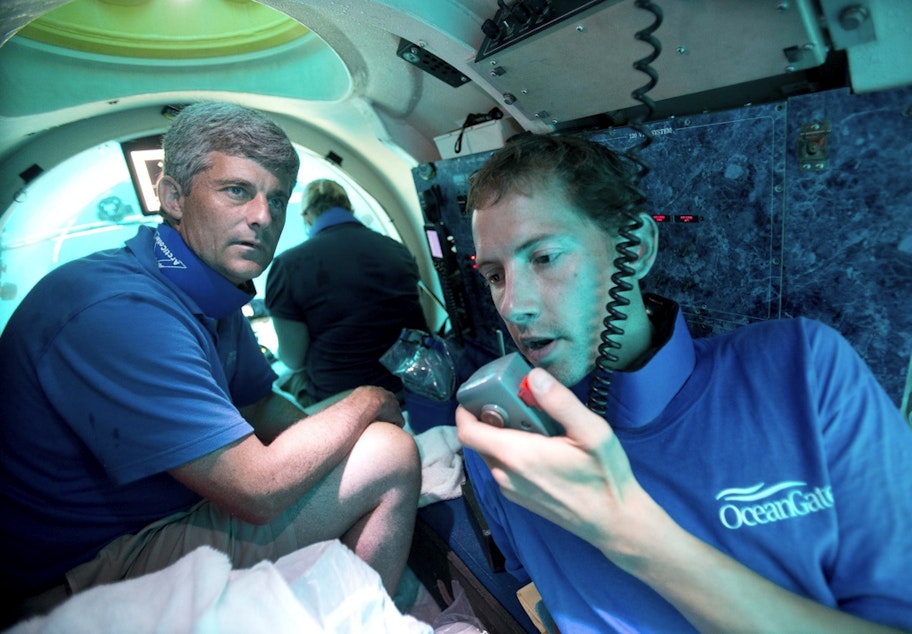Years before implosion, experts warned OceanGate CEO and federal government about submersible's dangers

On June 18, the Titan submersible went missing during a dive to the Titanic shipwreck. It made international headlines and became a 24-hour news cycle obsession.
The implosion of the sub killed five people, including OceanGate co-founder and CEO Stockton Rush; the Everett company has ceased commercial operations.
To most of the world, the disaster was tragically sudden, but some people within the submersibles industry had known for years that OceanGate's cylindrical vessel was extremely dangerous.
Why it was still allowed to dive despite expert warnings reveals the complicated intersection between scientific exploration and for-profit, extreme tourism.
"People have been going to Titanic wreck since the 1980s," said Ben Taub, a staff writer at The New Yorker who documented the many known issues leading up to the Titan's implosion. "The submersible world is very, very clear on exactly how to build subs that can operate at that depth."
OceanGate's design didn't follow the design principles normally used for submersible experiencing increased pressure in the ocean. The OceanGate submersible was built using carbon fiber instead of titanium.
"Carbon fiber is strong material under tension; it is not a strong material under compression," Taub said. "It's a capricious material — you never actually know when it's going to fail when it's repeatedly exposed to its limits."
The Titan submersible was also build as a cylinder instead of a sphere, in order to accommodate more people.
"A rule of the industry is that if you're doing deep ocean work, you need to have a sphere with a pressure hull the people go inside," Taub said. "That's because it evenly distributes pressure."
Taub added that members of the submersible industry repeatedly sent letters to both Stockton Rush and the United States government about the potential dangers of the Titan submersible.
David Lochridge, a submariner and engineer with over three decades of experience, was the director of marine operations at OceanGate starting in 2015. He was fired after raising concerns about the submersible's design.
"Lockridge submitted his report to OSHA, the Occupational Safety and Health Administration, because he was so concerned that this sub would kill people if they ever went down," Taub said. "OSHA shared his report with the Coast Guard at the time OceanGate was carrying out testing in Puget Sound. So this was inside U.S. jurisdiction even though the company had structured things corporately, to try to keep the sub out of the jurisdiction of the Coast Guard or any U.S. regulators. And nothing sort of came at it."
Click the play button at the top of this story to hear more from Taub about the many warnings OceanGate received about flaws in their submersible design and steps the company took to avoid liability for potential harm.





